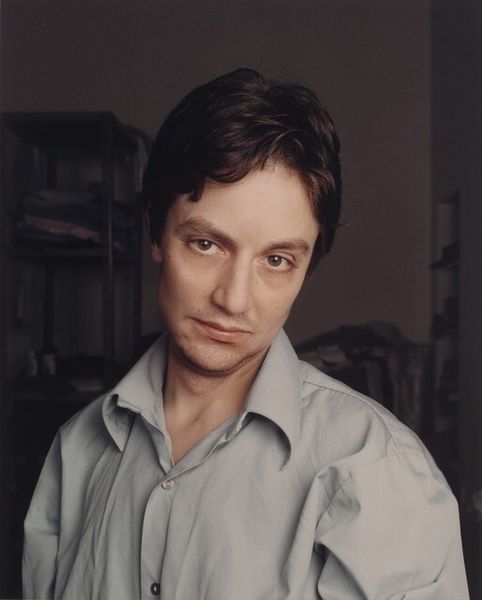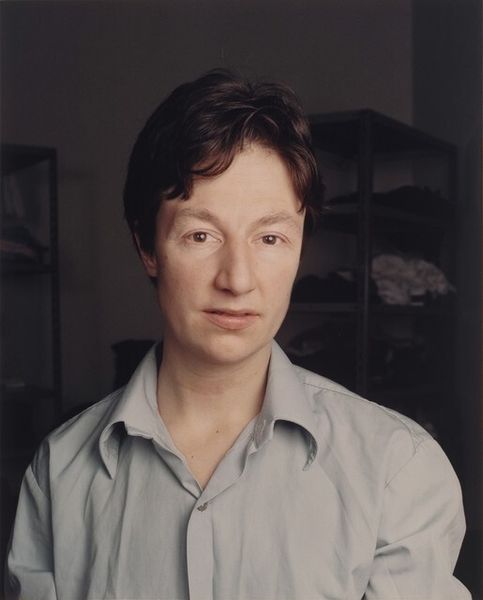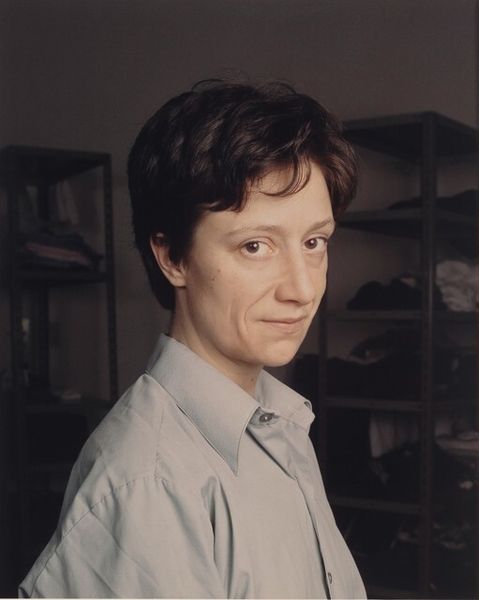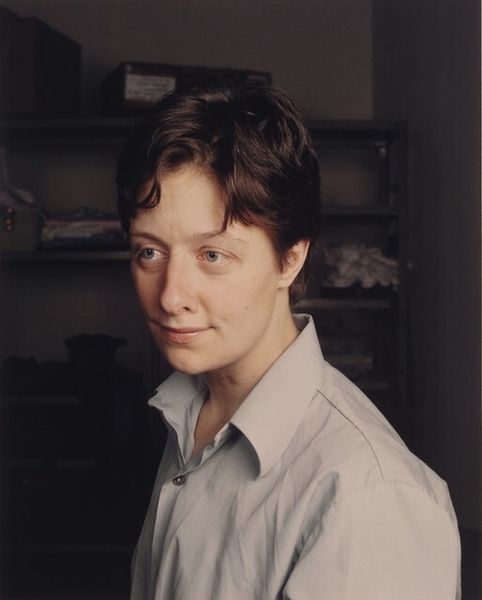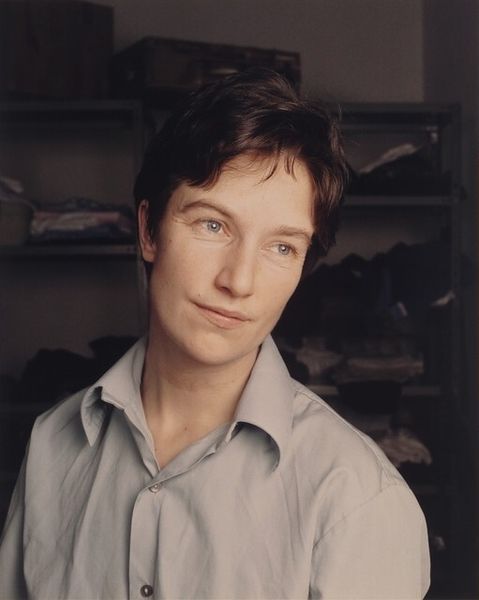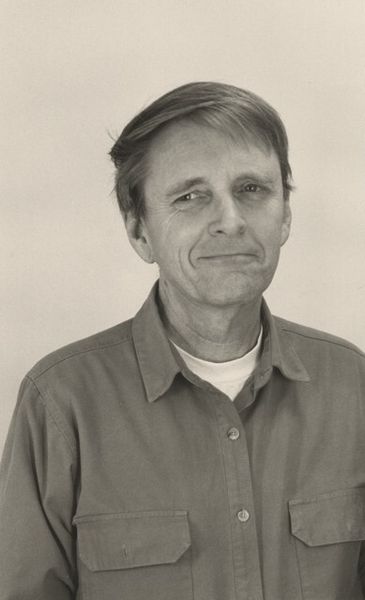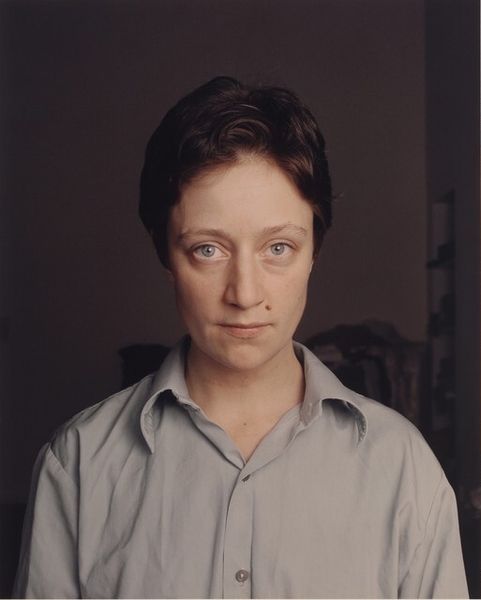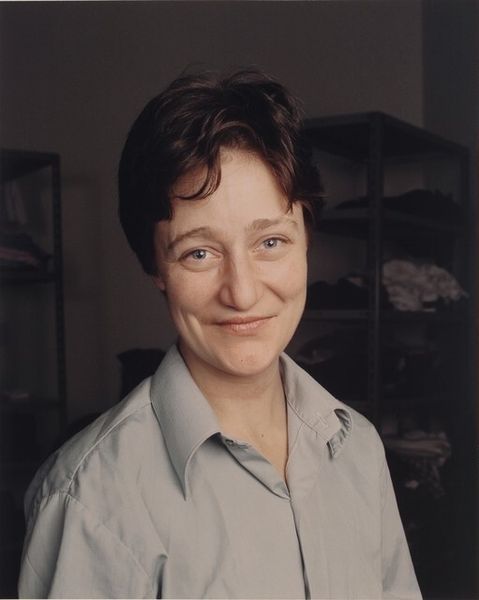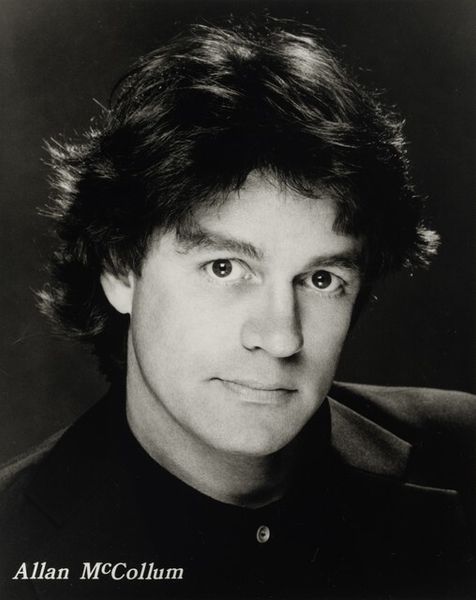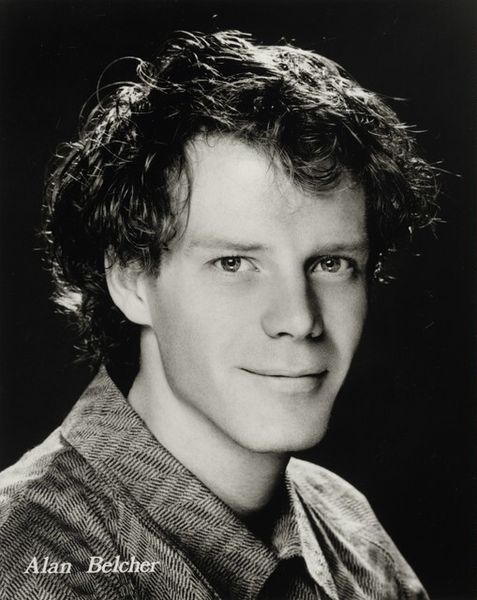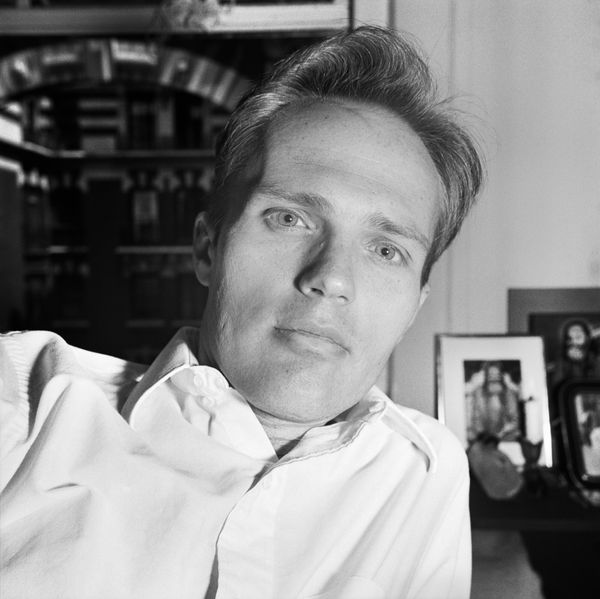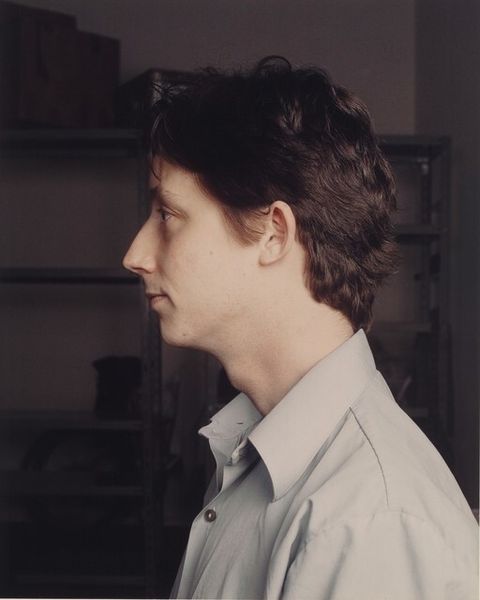
photography
#
portrait
#
contemporary
#
self-portrait
#
photography
#
modernism
#
portrait photography
#
realism
Dimensions: image: 45.7 x 36.6 cm (18 x 14 7/16 in.) sheet: 46.4 x 37.3 cm (18 1/4 x 14 11/16 in.)
Copyright: National Gallery of Art: CC0 1.0
Curator: Vibeke Tandberg's 1998 photographic piece, "Faces #3," presents us with a compelling, almost unnerving portrait. What jumps out at you? Editor: An incredible mundanity, wouldn’t you agree? The soft gray of the shirt, the slightly out-of-focus shelves crammed with...are those linens? It reads like everyday life processed through some unsettling filter. I'm immediately interested in the labor, not only involved in staging this piece but perhaps reflected by the ordinariness of the scene as well. Curator: Mundane, yes, but is it? Look closer. It's her face – or rather, a meticulously constructed version of herself. I sense layers of artifice carefully composed in such a way that makes it hard to spot it at first glance. Editor: So the point becomes less about the labour involved in appearing natural. I wonder if the photographic processes – the developing, printing – are crucial. There is no indication that there are digital alterations so, even more interestingly, how does the "raw" unedited image add to the themes or processes within? Curator: Precisely! To me, it echoes some modern portrait traditions while quietly challenging them, inviting us to ponder gender performance, identity, and the power of self-representation. She has such piercing look too - I get the feeling I shouldn't take the portrait as 'straightforward' as the aesthetic seems. Editor: I get what you're saying. Her gaze feels confrontational somehow. But I keep circling back to the overall understated feel, and the textures within. I would be very curious as to whether a matte paper was deliberately selected to print this portrait? If so, then it would add to the muted visual register. There’s almost an anonymity about this photographic portrait. Perhaps we're all 'Faces #3' after all. Curator: That's a fascinating connection to draw, truly. By meticulously arranging familiar material, she guides us to inspect, reflect, and ultimately confront what it means to see ourselves. Editor: A photographic echo for the times. The sheer volume of portraiture that has dominated culture and everyday experiences certainly feels mirrored in the themes raised here. Food for thought, indeed.
Comments
No comments
Be the first to comment and join the conversation on the ultimate creative platform.
